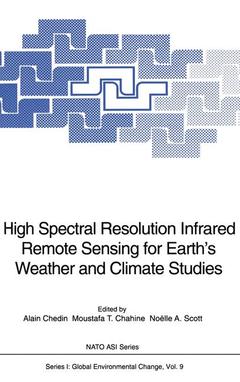One of major challenges facing Earth's science in the next decade and beyondis the development of an accurate long term observational data set to study global change. To accomplish this, a wide range of observations will be required to provide both new measurements, not previously achievable and measurements with a greater degreee of accuracy and resolution than the ones which are presently and currently available. Among the parameters that are currently retrieved from satellite vertical sounding observations, temperature and moisture profiles are the most important for the description of the thermodynamic state of the medium. Other parameters, like those describing the cloud fields, the surface state or the conditions close to the surface are also key parameters for meteorology and climatology. A new generation of high spectral atmospheric sounders in the infrared has recently been designed to provide both new and more accurate data about the atmosphere, land and oceans for application to climate studies. Among the important observations that these instruments should contribute to the climate data set are day and night global measurements of: atmospheric temperature profiles; relative humidity profiles; cloud field parameters; total ozone burden of the atmosphere; distribution of minor atmospehric gases (methane, carbonmonoxide and nitrous oxide).




